Weigela is a shrub of eastern origin, well developed, but only in botanical gardens. But this is a miracle of color, aroma, expression! Abundant blooming at the beginning of summer, when the queen of flowers - the rose - has not yet bloomed, our eyes are attracted by the bright colors of the most graceful bell flowers, nodding welcomingly to us, inviting us to feel the beauty of the coming summer.
With all this splendor, planting and caring for weigela does not pose any difficulty; growing this shrub is accessible to even the busiest summer residents.
Weigela is a spreading shrub up to 2 m high from the honeysuckle family.
It is considered a highly decorative plant because it has a proportionally developed crown, long, weeping shoots and abundant luxurious flowering.
The flowers are tubular, original bell-shaped, depending on the species they can be red, pink, yellow-white, milky white. They are in umbrella-shaped inflorescences. Weigela blooms magnificently and for a long time - from May to the end of June. Its homeland is the Far East. It grows wild in China, Japan, and the Kuril Islands.
Planting weigela
All types of weigela love fertile soil on which they bloom luxuriantly. The land should not only be fertile, but also structural and moisture-absorbing. Weigela requires open, sunny places for planting.
You should not plant it in lowlands where water can stagnate, as well as on acidic, heavy soils and in drafts.
Seedlings planted in autumn often die, so the best time to plant weigela is early spring. Planting holes are prepared measuring 50 × 50 cm. Add 50 grams to the soil with which you will fill the seedlings. superphosphate and potassium salt. If the soil is poor and sandy, then add 1 - 2 buckets of humus to it. Do not bury the root collar; it should be at soil level.
When planting several weigela bushes, maintain a distance of 1 m between low-growing plants and 2 - 3 m between tall plants. Mulch the tree trunks of the seedlings with mown grass or sawdust.
Weigela care
Weigela plants are not demanding and need care until they grow and become stronger. However, they love fertilizers, especially organic ones - fermented bird droppings, mullein, diluted 20 times.
Nitrogen fertilizing should begin in the spring during the period of active development of shoots, giving them with irrigation water after 2 weeks. During the budding period, superphosphate should be added to them at the rate of 1 tbsp. spoon onto a bucket of organic solution. After watering and fertilizing, loosening is carried out. Of course, weeds are unacceptable, since they compete for moisture.
In summer, when there is a lack of watering, weigela suffers, but in rainy weather it thrives.
Caring for weigela includes systematic annual pruning, since it blooms on the shoots of the current year. In young weigela bushes, pruning should be limited to cutting off shoots after flowering. At the age of five or more years, bushes can be rejuvenated in the fall by pruning them “to the stump.” The plants will grow back next year and bloom again.
Young bushes should be covered for the winter. For this purpose, you can use spunbond or any other covering material. Cover the root area with straw and castings as well. Shelter is required only for young plants; when the bushes grow to one and a half meters or higher, they will winter without shelter.
Weigela propagation
Weigela reproduces:
- Seeds
- Lignified cuttings
- Green cuttings
- Root suckers
Propagation of weigela by seeds
The most frost-resistant and resistant to adverse conditions are plants obtained from seeds. And, besides, this is the most productive way of propagating weigela. The seeds ripen in September.They are very small, but their germination rate is one hundred percent. You can sow in both autumn and spring. In the south, spring sowing is preferable. There is no need to stratify the seeds.
Seeds are sown without embedding. It is enough to sprinkle 0.5-1 cm of peat or humus on top and compact it slightly. Abundant watering through a fine strainer is required.
Seedlings should grow in one place for 3-5 years without transplanting. And only after reaching a height of 80-100 cm are they planted in a permanent place. Choose a place for planting that is sunny but protected from the winds. Neither young seedlings, nor leaves, nor weigela flowers like the wind.
After transplantation and the beginning of growth, it is necessary to give organic fertilizer. After watering, it is good to mulch the soil with high-moor peat, humus or leaf soil.
Propagation of weigela by lignified cuttings
Cuttings taken from annual shoots take root at any time of the year, but it is better in the spring, before the buds begin to bloom. Propagation by lignified cuttings is the most popular method, but green cuttings a week after flowering are also possible.
Wood cuttings are harvested in late autumn or early winter, but before the onset of severe frosts. Cuttings are stored in the cellar until spring. It is completely wrong to cut cuttings from overwintered shoots early in the spring. You can save shoots cut in autumn not only in a damp cellar, but also in grooves under the snow, after burying them in the sand. The shelter must ensure complete safety of the shoots from drying out, freezing, and disease.
In spring, the shoots are cut into cuttings. The lower cut is located under the bud itself, and the upper one is 1-2 cm above the upper bud.
If the cuttings are planted directly into the ground, then their length should be 25-30 cm. The upper part of the shoot, like the lower part, is not cut into cuttings. The cuttings are planted obliquely, immersing it completely in the soil, leaving 2-3 pairs of buds. Care - watering, loosening, weed control. Rooting occurs on the 15-20th day and is usually one hundred percent.
How to propagate weigela with green cuttings
Weigela can also be propagated from green cuttings. The shoots are cut off when they have not yet become woody, but this process has already begun. They do not break, but only bend elastically. The bark of the shoots is green.
In terms of time, this is the beginning - mid-June. The shoots are cut early in the morning, since at this time they are maximally hydrated. To reduce evaporation, the leaf blade is cut in half.
They should be immersed in water immediately after cutting, but not kept in it for a long time to prevent leaching of organic substances. The cuttings are planted in a box filled with loose soil. River sand is poured on top in a layer of 1-2 cm. Planting depth is 0.5 cm. The box is covered with film until the cuttings are rooted, systematically ventilated.
Cuttings root successfully at 90-100% relative humidity after two weeks. Well-rooted cuttings can be immediately planted in the ground. A good bush from cuttings is obtained in the 3rd year.
In addition to the usual care for rooted cuttings, it is necessary to provide them with shelter for the winter. Young weigela plants do not tolerate temperature changes in winter, lack of snow and frost. It is necessary to cover not with earth, but with peat, humus, fallen leaves or spruce branches. In the southern region it winters without shelter.
Weigela can be propagated by root suckers
And there is another way of propagation - by root suckers.When they are formed, depending on the species, the rooting of the new plant is successful and flowering occurs already in the 2nd year.
Weigela is the best decoration for a small amateur garden. Its flowering shoots are good in bouquets. When cut, the branches last for two or even three weeks.
Varieties and types of weigela
There are a few known species of weigela that are found among amateur gardeners.
Weigela early is a spreading shrub with branches bending almost to the ground. It blooms earlier than other species, abundantly and spectacularly. The flowers are purple-pink. Bush up to 2 m in height.
Weigela is nice - as if justifying its name, this view amazes with its modest grace. The bush is low - up to 0.5-1.5 m. Flowering is abundant. The flowers are large, lilac-pink.
Weigela blooming - the most abundantly flowering species. The flowers are bright pink, relatively small. The bush is low and not winter-hardy. Requires shelter for the winter, since when it freezes it hardly grows back.
Weigel Middendorf - low, border bush up to 1 m in height with a very dense crown. The flowers are large, light yellow, with red dots in the throat. It loves moisture, so it is effective in humid summers.
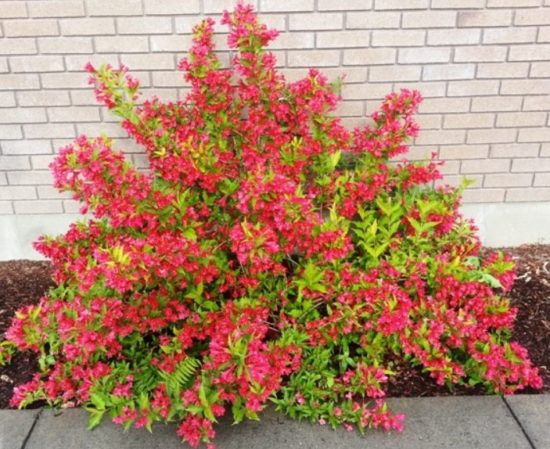
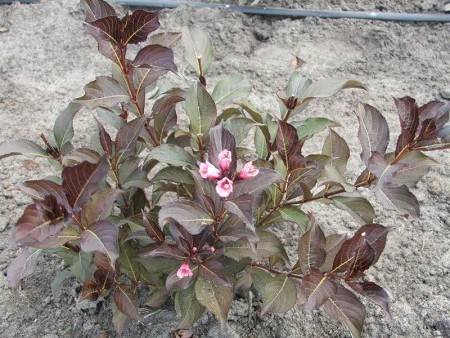
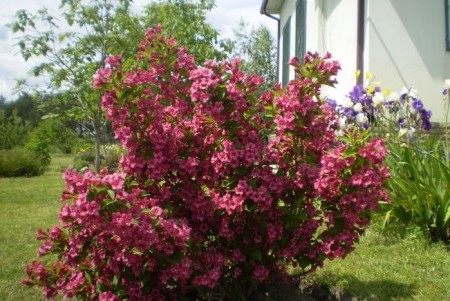
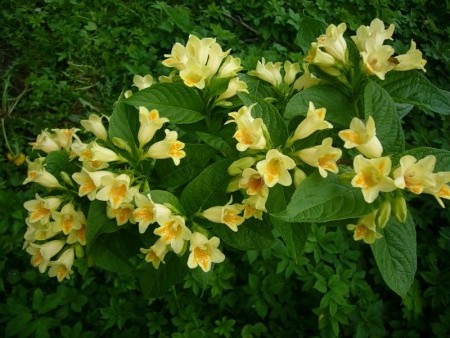
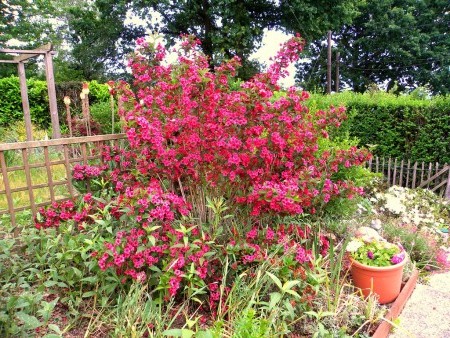
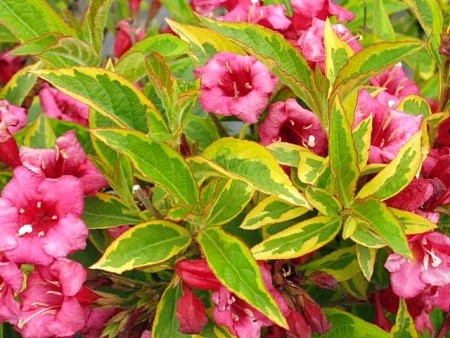
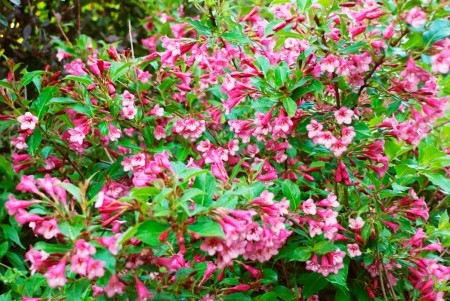
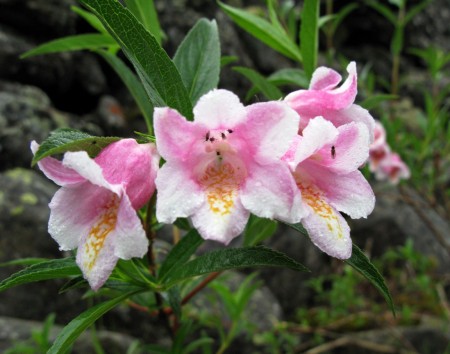
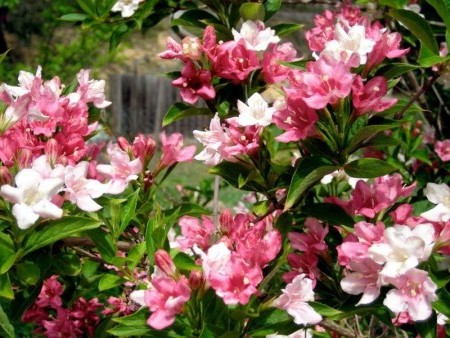
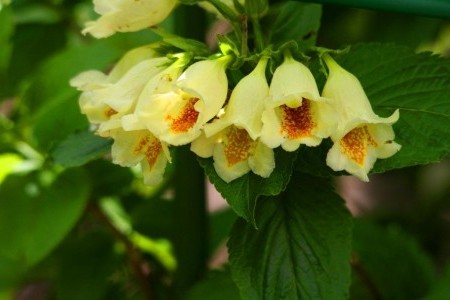

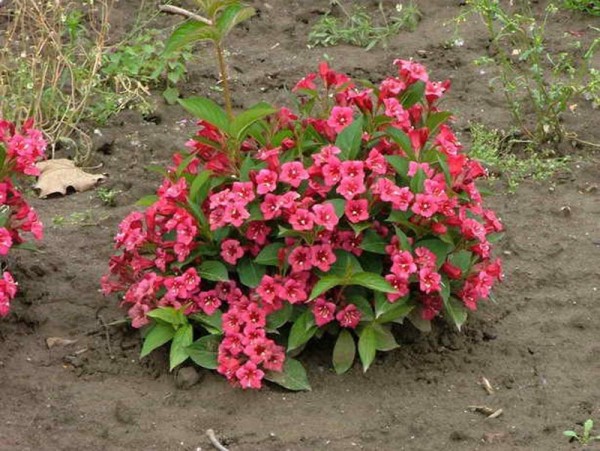
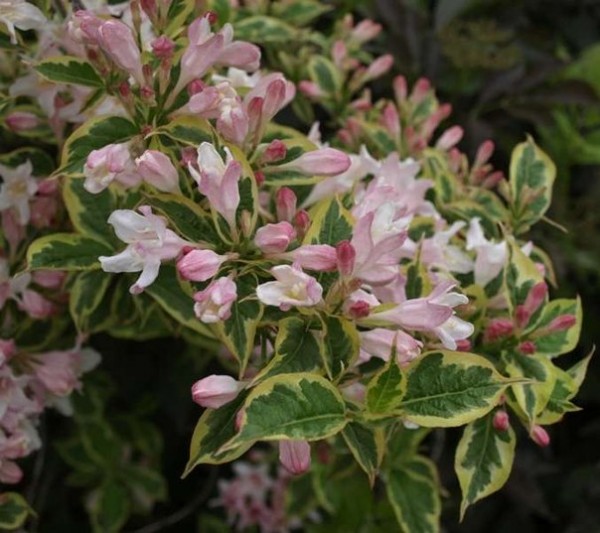
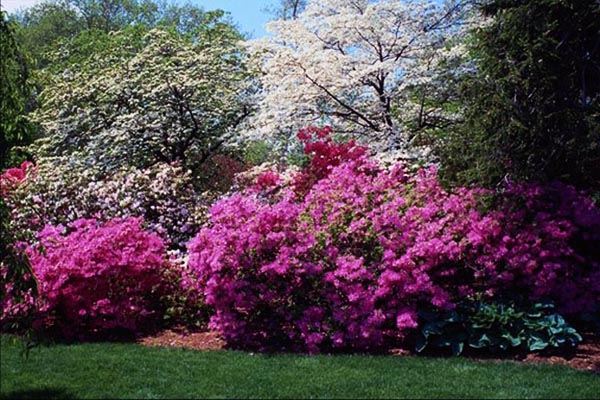
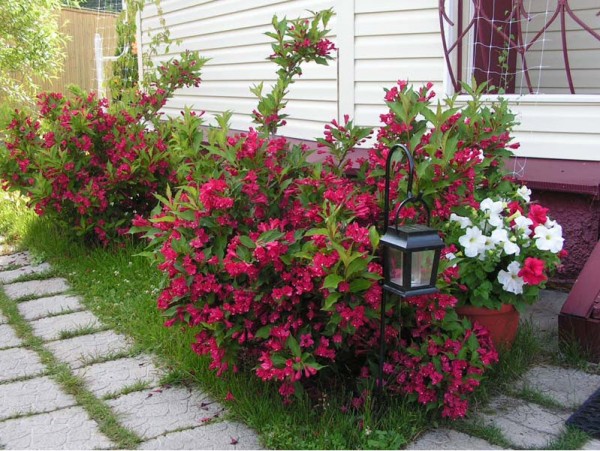
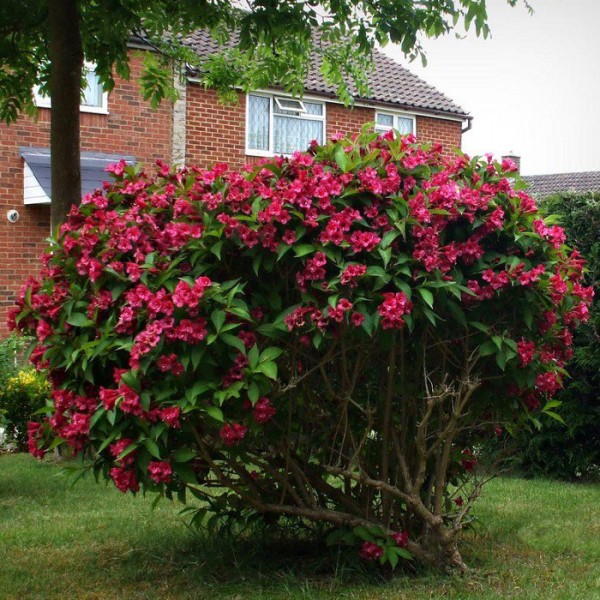
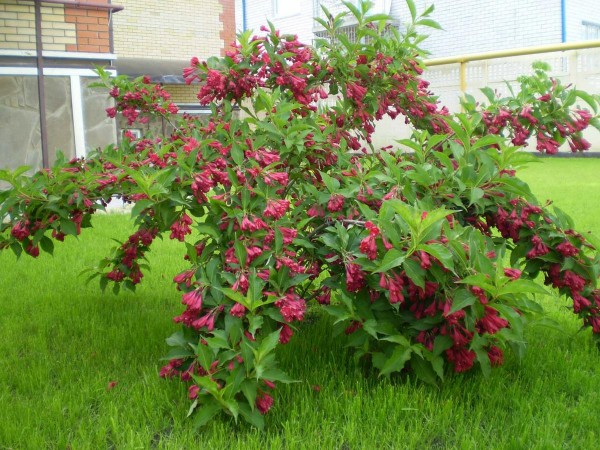
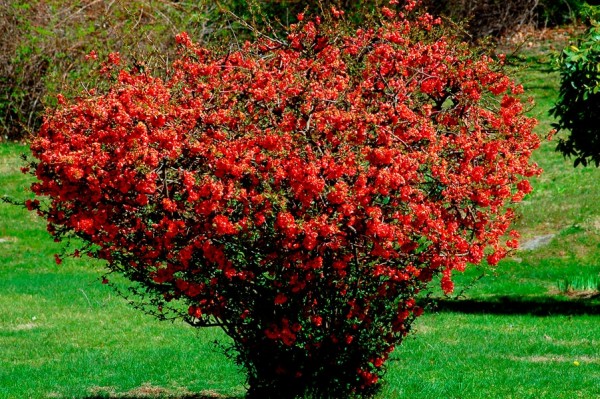

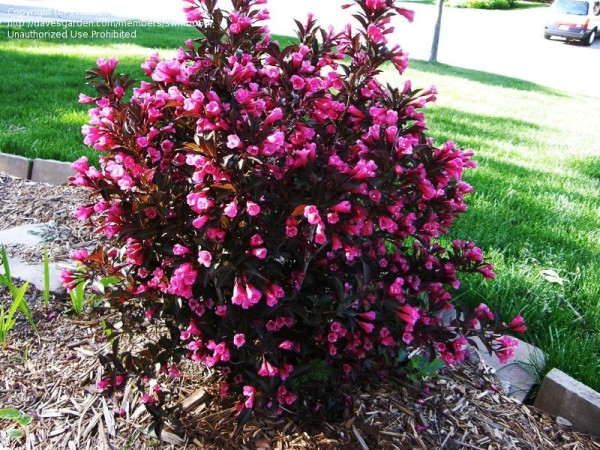
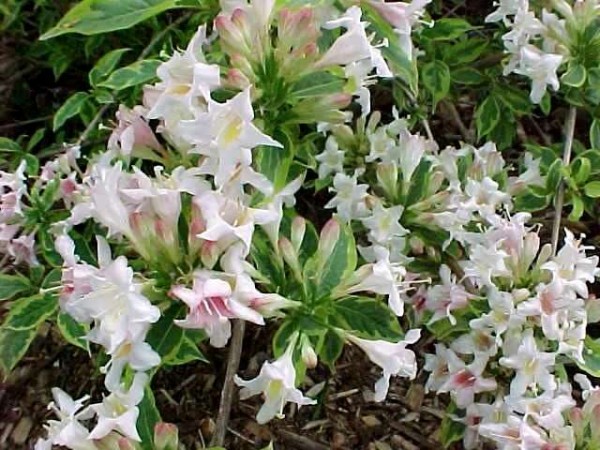

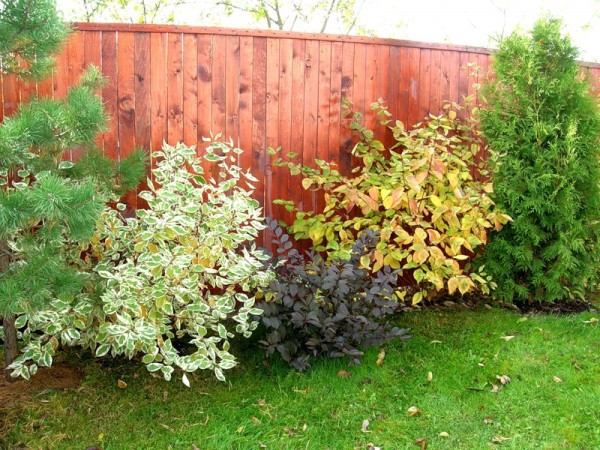
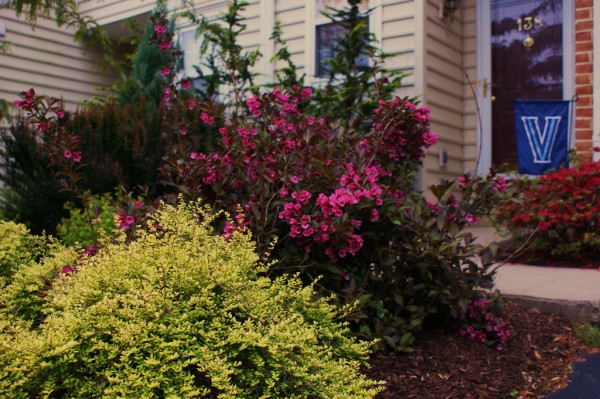
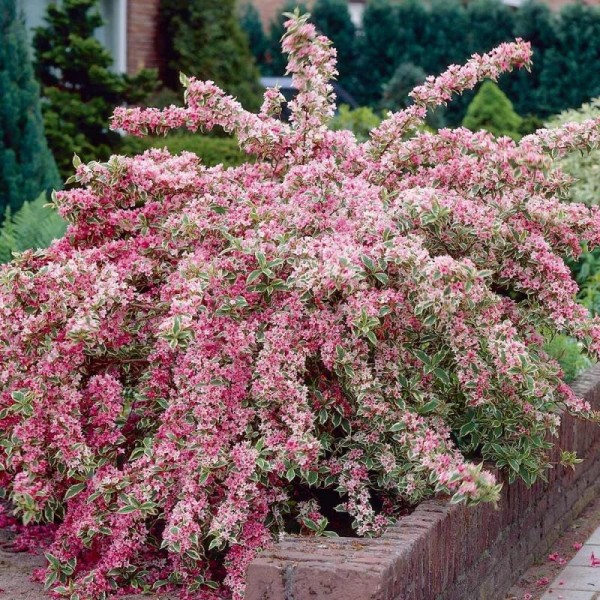
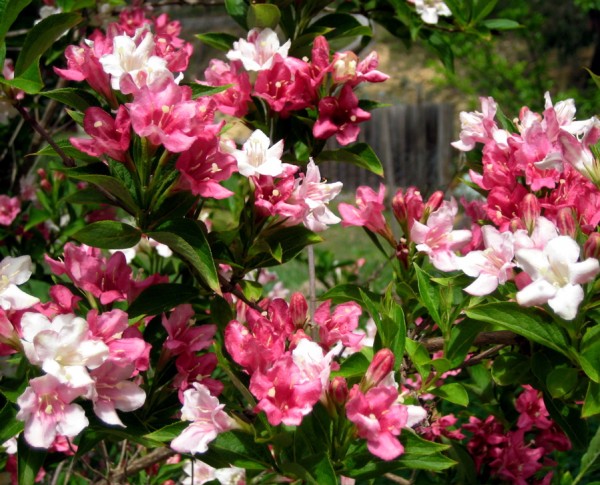

 (11 ratings, average: 4,64 out of 5)
(11 ratings, average: 4,64 out of 5) CUCUMBERS NEVER GET SICK, I'VE BEEN USING ONLY THIS FOR 40 YEARS! I SHARE A SECRET WITH YOU, CUCUMBERS ARE LIKE THE PICTURE!
CUCUMBERS NEVER GET SICK, I'VE BEEN USING ONLY THIS FOR 40 YEARS! I SHARE A SECRET WITH YOU, CUCUMBERS ARE LIKE THE PICTURE! You can dig a bucket of potatoes from each bush. Do you think these are fairy tales? Watch the video
You can dig a bucket of potatoes from each bush. Do you think these are fairy tales? Watch the video
 How our fellow gardeners work in Korea. There is a lot to learn and just fun to watch.
How our fellow gardeners work in Korea. There is a lot to learn and just fun to watch. Eye trainer. The author claims that with daily viewing, vision is restored. They don't charge money for views.
Eye trainer. The author claims that with daily viewing, vision is restored. They don't charge money for views. A 3-ingredient cake recipe in 30 minutes is better than Napoleon. Simple and very tasty.
A 3-ingredient cake recipe in 30 minutes is better than Napoleon. Simple and very tasty. Therapeutic exercises for cervical osteochondrosis. A complete set of exercises.
Therapeutic exercises for cervical osteochondrosis. A complete set of exercises. Which indoor plants match your zodiac sign?
Which indoor plants match your zodiac sign? What about them? Excursion to German dachas.
What about them? Excursion to German dachas.
The collection is lovely. Error